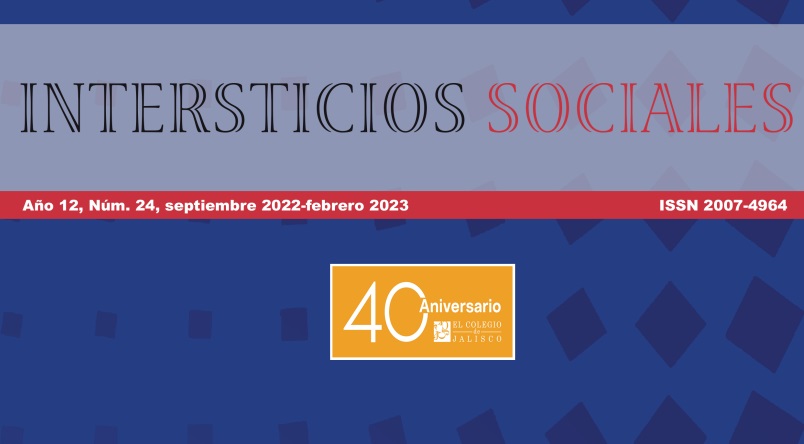Citrus producers in the state of Nuevo Leon, characteristics, problems and alternatives
DOI:
https://doi.org/10.55555/IS.24.429Keywords:
citriculture, oranges, LAAS, regionAbstract
This study was conducted with the following objectives: a) to characterize the weakest actors in the productive chain in the citrus-growing region of Nuevo León by locating them in a scheme that represents the processes involved; b) to analyze this sector based on real production, information generated by the actors through an analysis of focal groups and the creation of a model designed to present responses on their fragility; and c) to establish mechanisms of incorporation into the agroindustrial sector by resolving the daily problematics that producers face. We began by interviewing 156 citrus producers using the theoretical focus called Localized Agroalimentary System (LAAS), strengthened by integrating qualitative and quantitative methods and considering the historical context. The information gathered through fieldwork allowed us to identify the producers and insert them into typologies created on the basis of similarities and differences, among other factors. The next step consisted in constructing a strengths, opportunities, weaknesses, and threats matrix that represented adverse or problematic situations and potential options for reinforcing the productive chain. This allowed us to generate an alternative model that would transform producers into strategic actors with a greater capacity for self-management and innovation in their orchards. Through a focus on regional analysis and specific resources, we obtained a typology of producers that emphasizes associative strategies, agroindustrial linkages, proposals for transforming intermediaries into system negotiators, the generation of risk management measures in decision-making, and a prospective alliance.References
Ávila, J.M. Aguilar. Selección de actores a entrevistar para analizar la dinámica de innovación bajo el enfoque de redes. México: Universidad Autónoma Chapingo-CIESTAAM/PIIAI, 2007.
BANCOMEXT, SARH y. «La industria de la naranja en México.» Revistas Bancomext magazines: comercio exterior, 1993: 222-247.
D.R. «Redes sociales asimétricas en el sistema hortócola del Valle de Tepeaca, México.» Economía, Sociedad y Territorio, 2010: 207-230.
Howells, J. «Intermediation and the role of intermediaries in innovation.» Science Direct, 2006: 715-728.
Klerkx. Fortalecimiento de las capacidades de innovación agrícola. ¿Los gestores sistémicos de innovación son la respuesta? México: INNOVAGRO/IICA, 2009.
Larroa, R.M. «Ixhuatlán del café: territorio en disputa.» En Sistemas agroalimentarios localizados. Identidad territorial, construcción de capital social e instituciones, de Gerardo Torres, 271-301. México: Universidad Nacional Autónoma de México/Juan Pablos editor, 2012.
León, Secretaría de Desarrollo Agropecuario de Nuevo. Secretaría de Desarrollo Agropecuario de Nuevo León. Monterrey: Secretaría de Desarrollo Agropecuario de Nuevo León, 2020.
Pantoja, Gerardo. «El sector citrícola de Nuevo León: caracterización del sistema agroalimentario como plataforma de integración del productor con la agroindustria.» Región y sociedad, 2018: 01-47.
Pantoja, Gerardo y Rodríguez, Javier. «Transición agrícola en Nuevo León: citricultura e identidad regional.» Humanitas, 2016: 147-166.
Pensado, M. «El actor social agrario en las instituciones y los SIAL en México.» En Sistemas agroalimentarios localizados. Identidad territorial, construcción de capital social e instituciones, de G.T. Larroa, 359-383. México: Juan Pablo editor, 2012.
SAGARPA. Planeación Agrícola Nacional 2016-2030. Cítricos, limón, naranja y toronja mexicanos. México: SAGARPA, 2018.
Vaquero, E. Entrevista sector agroindustrial de cítricos y asociación. Direc. Gerardo Pantoja. Comp. Gerardo Pantoja. 2015.
Vázquez, J.A. Robertson: impulsor de la industria regiomontana (1890-1910). Monterrey: Congreso del Estado de Nuevo León, 1999.

Published
How to Cite
Issue
Section
License
Copyright (c) 2022 Intersticios Sociales

This work is licensed under a Creative Commons Attribution-NonCommercial-ShareAlike 4.0 International License.
Copyright notice
Once a work has been approved for publication in Intersticios Sociales, each author must sign the corresponding transfer of patrimonial rights on the form approved by the journal.
Each author retains the moral rights to her/his work, and the transfer of rights described above is exclusively for academic –not lucrative– purposes, by Intersticios Sociales and El Colegio de Jalisco.











